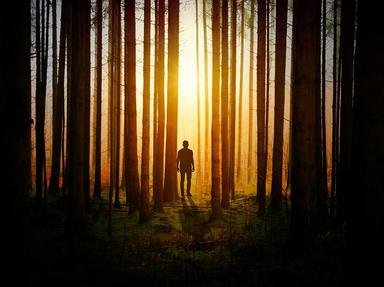Quiz Answer Key and Fun Facts
1. This secret agent was created by an author who was himself a former member of the British Naval Intelligence Service. For those who have only seen his incarnation in movies the highly descriptive and literary style adopted in the original novels may come as a welcome surprise. Who was this, probably best known, Secret Agent?
2. This US author, a former CIA agent, has produced a series of novels of a very high literary merit based on the life and family of this American secret agent. The novels cover the times of this character's life from his boyhood during the Nazi terrors in pre-war Germany, through the post Second World War and into the Cold War period, including CIA operations in Berlin, Africa, and the Far East, and imprisonment in China. The novels at times have an abstracted or near mystical atmosphere. Can you name the main protagonist?
3. This author is sometimes said to have written the first spy novel in English Literature, a contention challenged by supporters of Kipling, of course. He mainly based the activities of his spy characters in Europe in the period around the turn of the nineteenth and twentieth centuries. His best known novel appeared in 1904 and was based on his own sailing trips along the German coast. It predicted war with Germany and was later acknowledged by Churchill as being a factor in the strategies employed by the British Admiralty in the time leading up to the First World War. Do you know who this author was?
4. This author, a retired British intelligence officer, wrote a fairly accurate portrayal of spying in the First World War in his novel published in 1928 which was later filmed by Hitchcock as 'The Secret Agent'. Can you identify the author?
5. This author was another retired British intelligence agent. He was the director of the Aegean Intelligence Service for a time. He wrote his first successful spy satire during the 1930s. He wrote an incredible number of novels and other books including a ten book series of autobiographies which he completed at the age of 88 years. He was a very proud Scot. Do you know who this was?
6. This much-travelled British author based his novels which appeared after World War II on his own experience with British Intelligence, producing a number of anti-imperialist spy novels. The extent of his involvement in the British Secret Service has become a matter of intense press and critical speculation in early 2005. He publicly declared himself a lifelong friend of Kim Philby, the convicted spy and famous escapee, after working under him in the MI6. Do you know who this author was?
7. This creator of spy characters was the son of a clergyman and was himself ordained after graduating from Oxford, and served as a priest for seven years before deciding he did not have the proper vocation and withdrawing from the clergy. He created Boysie Oakes and other characters as sort of spoof on James Bond licensed killers. Who was this author?
8. This most energetic of British secret agents was first created in the 1920s by a lieutenant-colonel in the British Army. A further nine novels featuring this character appeared. Apparently the character was based on a real life member of the Scots Guards, Gerald Fairlie, who was a strapping six-foot-two army heavyweight boxing champion in 1919. Curiously, following the death of the original author, Fairlie took over writing the novels (another seven books) featuring the same character. Who was the secret agent?
9. This cool and cunning spy was definitely not of the upper classes. He first appeared in a novel in 1962. He was created by an author who began his working life as a railway clerk before doing his National Service as a photographer attached to the army's Special Investigation Branch. Can you identify this spy who also appeared in some British made films?
10. This author of spy stories was a lieutenant-colonel in the British Army Intelligence Corps during World War II. Later he followed a successful career in marketing and broadcasting before his first novels appeared in the early 1970s. Although probably best-known for his espionage novels, he has also published general novels and has had his spy novels published in twenty-three languages. Who was this author?
Source: Author
bracklaman
This quiz was reviewed by FunTrivia editor
agony before going online.
Any errors found in FunTrivia content are routinely corrected through our feedback system.
